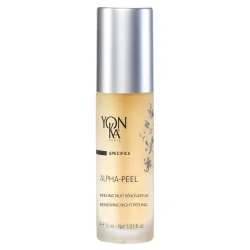2025 (3) 2024 (20)
Ingredient: Glycolic Acid
If you've ever used an exfoliant to scrub away dead skin cells, then chances are it contained Glycolic acid. It's one of the best ingredient, if not the best, dead skin exfoliator and is also used to minimize scars and even out skin tone.
Glycolic acid is made primarily from sugar cane. It is one of the alpha-hydroxy acids and one of the most studied. As we have discussed in the past, you need an ingredient with a small enough molecule to pass through the skin's outer barrier and penetrate in order for it to be effective. Glycolic acid has a every nice small molecule. It penetrates easily. It works to exfoliate by "ungluing" dead skin cells from each other.
Glycolic acid's ability to break down these dead skin cells makes it effective in fighting acne. Acne is caused by clogged pores which are full of dead skin cells. Unclogging them is a great first step in fighting acne. Glycolic acid also is able to reach into the hair follicles to loosen built-up sebum and proteins to prevent further acne breakouts.
As an anti-aging ingredient, glycolic acid has the ability to make our skin look more vibrant. Since we don't shed our dead skin cells as easily as we age, glycolic acid can step up and help remove them, making skin look younger and more youthful. It works the same for acne scars, age spots and sun damage by getting right of the excess pigment in the skin.
One of the extra side benefits of glycolic acid is its ability to help you skin absorb other products like retinol and Vitamin C. Using a glycolic acid exfoliator also makes makeup application easier as products apply much more smoothly.
Glycolic acid is safe to use as a daily face wash with a 7-10% glycolic ratio. A face cream may contain up to 15% glycolic acid and still be safe. The downside to glycolic acid is it makes the skin more sensitive to sunlight so it is best to use at bedtime, especially if it is a glycolic mask. You also want to make sure your product is pH balanced.


 write a review
write a review

 write a review
write a review




